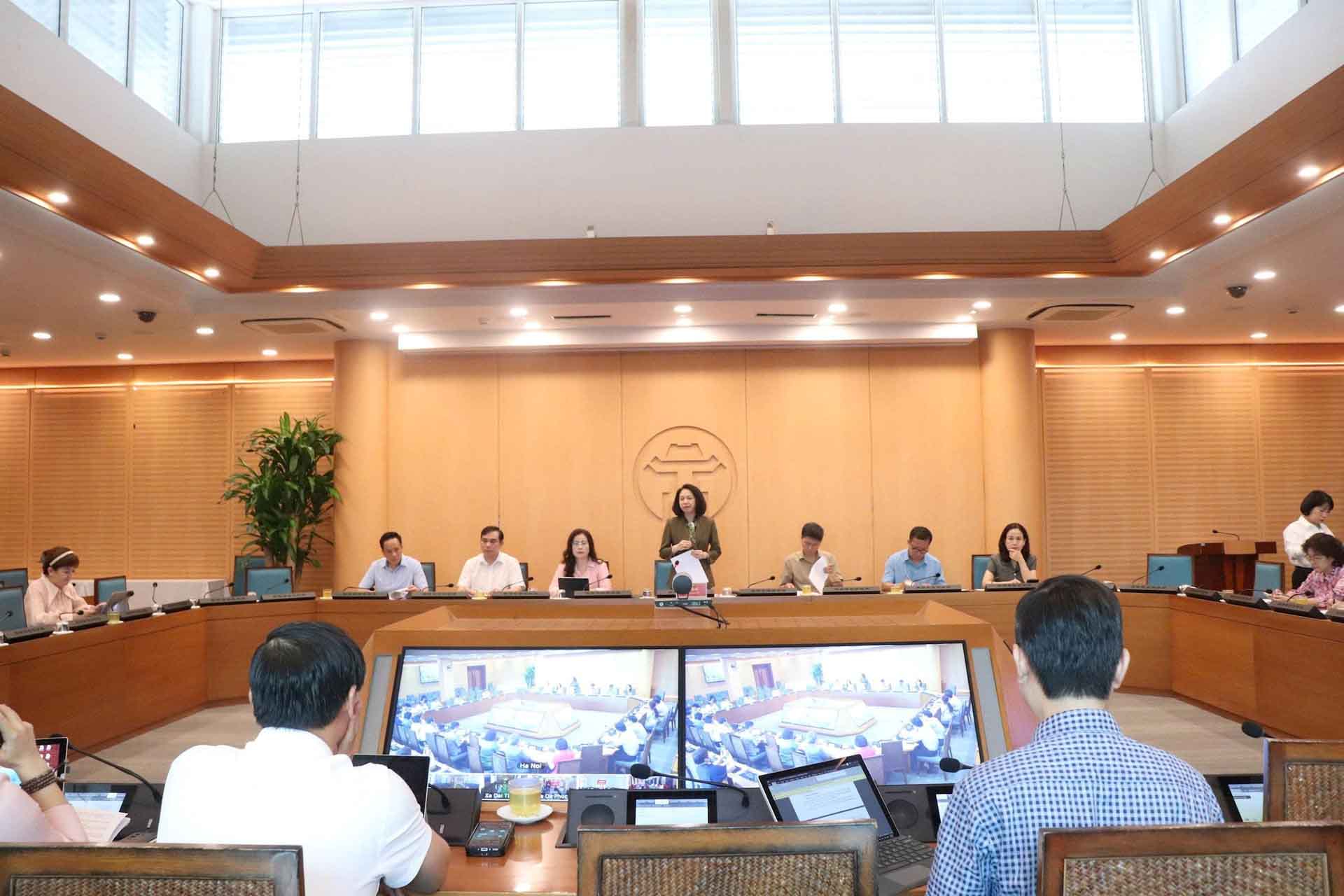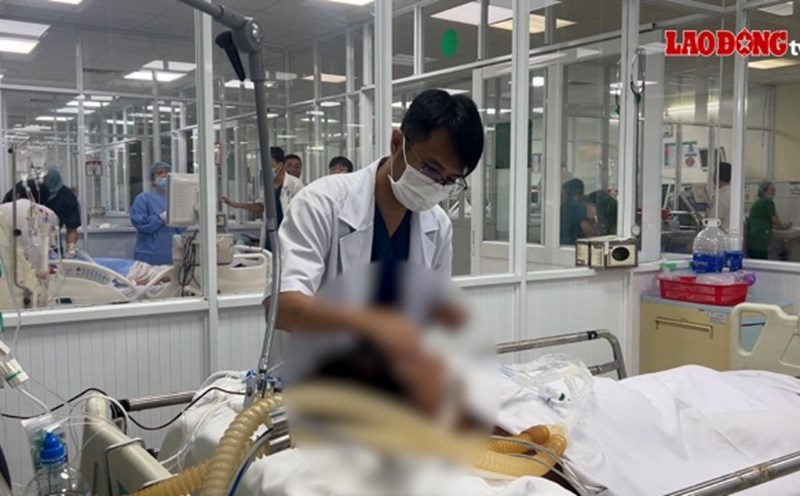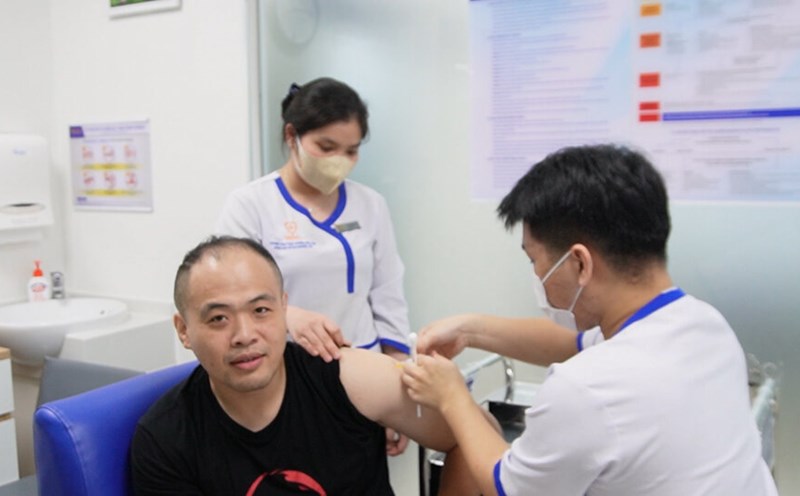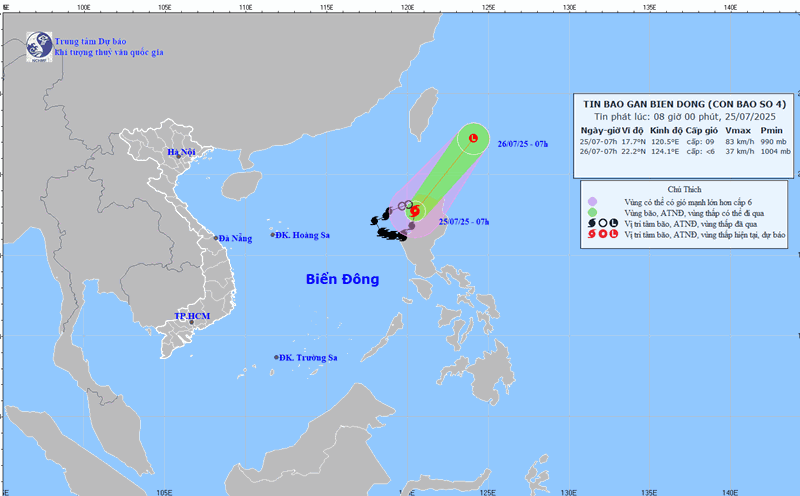On July 24, Vice Chairman of the Hanoi People's Committee Vu Thu Ha - Head of the Steering Committee for Disease Prevention and Control in People in the City chaired a meeting of the working group on dengue fever prevention in the area.
Reporting on the situation of dengue fever in Hanoi, Deputy Director of Hanoi Department of Health Vu Cao Cuong said that from the beginning of 2025 to July 23, 2025, the whole city recorded 403 cases of dengue fever, down 68.6% over the same period in 2024.
Patients are distributed in 91/126 wards and communes. Some wards and communes with high numbers of cases: Ha Dong (30), Tu Liem (20), Tay Ho (18), Binh Minh (17), Hat Mon (16), Phu Xuyen (15). There are 8 dengue fever outbreaks in 6 wards and communes; there are currently 4 outbreaks active in Phu Xuyen (7 patients), Xuan Phuong (7 patients), Hat Mon (5 patients), Tay Ho (5 patients).
Commenting on the epidemic forecast, Mr. Vu Cao Cuong noted that dengue fever in Hanoi in 2025 may increase in the following months, because according to the annual epidemic cycle, dengue fever in Hanoi often increases from July, rapidly increasing in August and September and the peak epidemic usually in October.
In addition, due to the impact of climate change, the current weather is very favorable for disease-carrying vectors to grow and develop, through weekly vector index monitoring in some places that still exceeds the risk threshold. Notably, dengue fever in Hanoi has tended to spread to suburban areas in recent years, currently recording an outbreak of 5 to 7 patients.
Meanwhile, some places have not yet completed the force of collaborators and shock troops to support environmental sanitation activities and killed bedridden workers, causing difficulties in preventing and handling outbreaks.
In addition, Hanoi has a rapid urbanization rate, high population density, large population fluctuations, many apartment buildings, high-rise buildings, schools, agencies, businesses, and hospitals located in the area. Therefore, every year, tens of thousands of people come to live and study and work, increasing the number of people infected with the disease.

In his speech, Vice Chairman of the Hanoi People's Committee Vu Thu Ha emphasized that the city is now at a peak period in epidemic prevention, so the requirement is that departments, branches, sectors, communes and wards must clearly understand the responsibility of each unit, absolutely not allowing dengue fever to break out in the city.
Along with identifying areas at high risk of outbreaks, organizing regular general cleaning every week must become more practical, mobilizing the participation of people and community monitoring forces. In particular, it is necessary to focus on training and guidance for each residential group area, so that people can check, detect, report, and coordinate timely handling.
In the context of implementing the two-level local government model, local leaders need to quickly grasp the situation and resolutely implement epidemic prevention and control work.
The city will organize surprise inspections and supervisions to assess and link the responsibility of commune and ward leaders, leaders of units... with the effectiveness of dengue prevention and control in the area.









